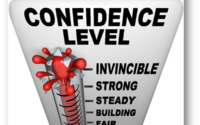Preplanning for Hazardous Materials (HM) Emergencies: A Comprehensive Guide
The HazMat Guys
In recent times, our team has engaged in conversations with various regions nationwide regarding the implementation of comprehensive exercises and simulated scenarios. These discussions aimed to assess the preparedness levels of different departments and communities. Our findings revealed a greater need for proactive planning and preparation for potential hazardous material incidents than initially anticipated. As a result, we collaborated to develop a comprehensive checklist. This resource is designed to assist you in preparing your local area for future emergencies.
Why Preplan?
Preplanning is essential for several reasons:
Improved Size-Up
Quick Assessment: Preplanning equips responders with detailed information about potential hazards, allowing them to quickly and accurately assess the situation upon arrival. This includes knowing the types of hazardous materials present, their locations, and the specific risks they pose.
Enhanced Decision-Making: With a preplan in place, responders can make informed decisions rapidly, reducing the time spent on gathering and analyzing information during the emergency. This can be crucial in preventing the escalation of hazardous situations.
Safety Measures: Knowing the layout of the facility and the potential hazards enables responders to establish safe zones, decontamination areas, and evacuation routes more efficiently, protecting both the public and the responders.
Guided Firefighting
Strategic Direction: A preplan provides a clear strategy for firefighting efforts tailored to the specific hazards of the site. This includes identifying the best approaches for fire suppression, containment, and ventilation.
Resource Allocation: Preplanning helps determine the necessary resources and equipment needed for effective firefighting. This ensures that the right tools and personnel are available when they are needed most.
Fire Control: Understanding the behavior of hazardous materials in a fire scenario allows responders to anticipate potential reactions, control the fire more effectively, and minimize the risk of secondary explosions or releases.
Rescue Assistance

Critical Information: Preplans offer essential information about the facility layout, including access points, escape routes, and the locations of potential victims. This helps rescuers navigate the site more efficiently and safely.
Coordinated Efforts: By having a preplan, rescue operations can be better coordinated, ensuring that all teams are working towards common goals and reducing the risk of confusion and miscommunication.
Victim Safety: Preplanning identifies the safest and most effective methods for rescuing victims, taking into account the specific hazards posed by the materials involved. This includes planning for decontamination procedures and medical treatment for exposure to hazardous substances.
The Philosophy Behind Preplans
A well-crafted preplan aims to control fires and mitigate hazards. It should clearly outline the steps responders need to take during an emergency involving hazardous materials.
Key Considerations for HM Preplanning
1. Expectations of a Preplan
Identify Involvement: A detailed account of all hazardous materials present at the site is essential. This includes:
Inventory: An accurate inventory of all hazardous materials, including quantities, locations, and
storage conditions.
Material Properties: Information on the physical and chemical properties of each material, including potential reactions with other substances.
Hazard Classification: Clear identification of the hazard class for each material (e.g., flammable, corrosive, toxic).
Action Steps: A well-defined set of actions that responders should take during an emergency. This should cover:
Initial Response: Immediate actions to contain and control the situation, such as isolation zones and containment strategies.
Detailed Procedures: Step-by-step instructions for handling different types of emergencies involving hazardous materials, including fire suppression, spill control, and evacuation procedures.
Emergency Contacts: A list of key contacts, including local hazardous materials experts, emergency services, and regulatory authorities.
Quality and Clarity: The preplan must be clear and comprehensive to ensure it can be easily understood and followed by responders. This involves:
Concise Language: Use straightforward, unambiguous language to avoid confusion.
Visual Aids: Incorporation of diagrams, maps, and flowcharts to visually represent critical information and procedures.
Regular Updates: Ensuring the preplan is regularly reviewed and updated to reflect changes in inventory, facility layout, and best practices.
2. Evaluating a Preplan
Criteria: Establishing clear criteria for what makes a preplan acceptable. This involves:
Completeness: Ensuring all relevant information is included and no critical aspects are overlooked.
Accuracy: Verifying that the information provided is accurate and up-to-date.
Usability: Assessing the ease of use and understanding of the preplan by responders.
Response Objectives: Defining likely response outcomes and reduction in losses. This includes:
Goal Setting: Setting clear, achievable goals for the emergency response, such as minimizing casualties, containing spills, and preventing secondary incidents.
Performance Metrics: Establishing metrics to measure the effectiveness of the response, such as response time, containment success, and recovery time.
3. Forms of Preplans
Documents: Example preplan documents from local jurisdictions can serve as templates or references. These documents should include:
Standard Operating Procedures (SOPs) Detailed instructions on handling specific hazardous materials and scenarios.
Emergency Response Plans: Comprehensive plans outlining the steps to be taken during different types of emergencies.
Training Exercises: Practical drills to test and refine the preplan, such as:
Live Drills: Simulated emergencies like pit fires with gasoline to provide hands-on experience and identify potential gaps in the plan.
Tabletop Exercises: Scenario-based discussions where responders walk through the preplan and discuss their actions in a hypothetical situation.
Training Films and Aids: Visual and printed resources to aid learning, such as:
Training Videos: Instructional videos demonstrating proper procedures and responses.
Manuals and Textbooks: Printed materials that provide detailed information on hazardous materials and emergency response techniques.
Simulation Software: Digital tools that allow responders to practice their skills in a virtual environment.
Evaluation Criteria for Preplans
A good preplan should:
1. Identify Objectives:
Operational Goals: The preplan should clearly outline the primary objectives that responders need to achieve during an emergency. These goals should be specific, measurable, achievable, relevant, and time-bound (SMART). Examples include:
- Containment: Prevent the spread of hazardous materials.
- Evacuation: Safely evacuate affected personnel and civilians.
- Mitigation: Minimize environmental impact and property damage.
- Rescue: Provide immediate assistance to injured or trapped individuals.
- Recovery: Facilitate a return to normal operations as quickly as possible.
- Prioritization: Establish a hierarchy of objectives to guide responders in prioritizing their actions based on the severity and type of emergency.
2. Describe Decision Factors:
Supporting Data:
- The preplan should provide comprehensive data to support decision-making processes, including:
- Material Properties: Detailed information on the physical and chemical properties of each hazardous material, such as reactivity, toxicity, flammability, and potential health effects.
- Site Layout Maps and diagrams of the facility highlighting key areas, such as storage locations, access points, and emergency exits.
- Resource Availability: Information on available resources, including equipment, personnel, and external support (e.g., local fire departments, hazmat teams).
- Decision Criteria: Clearly defined criteria that responders can use to evaluate the situation and make informed decisions. This includes:
- Risk Assessment: Identifying and assessing potential risks and hazards.
- Response Options: Evaluating different response strategies and their potential outcomes.
- Environmental Impact: Considering the environmental consequences of various response actions.
3. Predict HM Behavior:
Behavior Modeling: The preplan should include predictions of how hazardous materials might behave under different conditions, such as exposure to fire, water, or other chemicals. This involves:
- Reaction Scenarios: Descriptions of possible chemical reactions and their effects.
- Dispersion Models: Predictive models for the spread of hazardous materials in air, water, or soil.
- Event Sequences: “Mental movies” or visualizations of potential event sequences, helping responders anticipate and prepare for various scenarios.
- Simulation Tools: Utilize simulation software and other tools to model hazardous material behavior and train responders on likely scenarios.
4. Highlight Limitations:
- Operational Constraints: The preplan should clearly outline any limitations or constraints that responders might face during an emergency. This includes:
- Resource Limitations: Availability of equipment, personnel, and external support.
- Environmental Factors: Weather conditions, terrain, and other environmental factors that could impact response efforts.
- Regulatory Constraints: Legal and regulatory requirements that may affect the response strategy.
- Realistic Expectations: Set realistic expectations for what can be achieved with the available resources and under the given conditions.
5. Facilitate Adaptive Behavior:
- Flexibility: Encourage responders to be flexible and adapt their actions based on the evolving situation. The preplan should:
- Scenario Planning: Include multiple scenarios and response options to prepare responders for different possibilities.
- Decision Trees: Provide decision trees or flowcharts to guide responders through complex situations, allowing for quick adaptation.
- Training and Drills: Regular training and drills to reinforce adaptive behavior and ensure responders are comfortable adjusting their actions as needed. This includes:
- Live Drills: Realistic, hands-on training exercises that simulate different emergency scenarios.
- Tabletop Exercises: Discussion-based exercises where responders walk through hypothetical situations and discuss their response strategies.
- Feedback Mechanisms: Implement feedback mechanisms to monitor the effectiveness of the response and make real-time adjustments. This includes:
- Real-Time Data: Collect and analyze real-time data during the emergency to inform decision-making.
- After-Action Reviews: Conduct after-action reviews to identify strengths and areas for improvement in the response plan.
6. Guide for Execution:
Step-by-Step Procedures: The preplan should provide detailed, step-by-step procedures for executing the response. This includes:

- Initial Response: Immediate actions to contain and control the situation.
- Operational Phases Clear phases of the response, such as containment, mitigation, evacuation, and recovery.
- Coordination: Instructions for coordinating with other agencies and stakeholders.
- Operational Command: Clearly define the command structure and roles of each responder. This includes:
- Incident Command System (ICS): Utilizing the ICS framework to ensure clear communication and coordination.
- Chain of Command: Establishing a clear chain of command to avoid confusion and ensure accountability.
Conclusion:
Preplanning for hazardous materials emergencies is a critical component of ensuring the safety and well-being of communities and responders. By thoroughly identifying hazards, establishing clear response objectives, and facilitating adaptive behavior, a well-crafted preplan can significantly enhance the effectiveness of emergency responses. Regular training, evaluation, and updates are essential to maintaining the relevance and effectiveness of the preplan. By investing in comprehensive preplanning efforts, communities can be better prepared to handle hazardous materials emergencies and minimize the associated risks and impacts.




